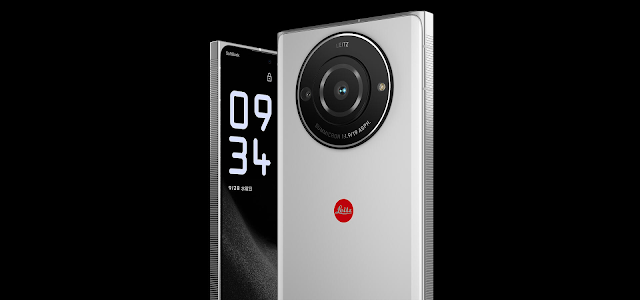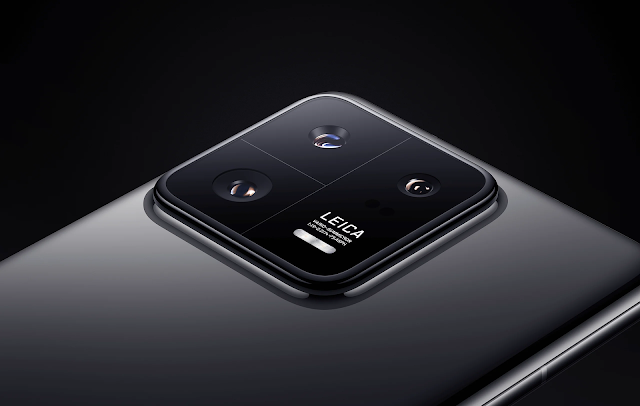By Heinz Richter
What if...? How often have we contemplated certain occurrences in the light of what has or hasn't happened?
That certainly is the case with Leica as well. Most cell phones these days have evolved to fairly capable cameras as well. As a matter of fact, they have all but wiped out the market for small, digital point and shoot cameras. Yet many could never imagine that Leica would be even remotely interested in this market segment.
Yet this is exactly what has happened. It is a known fact that Leica was collaborating with the Chinese company of Huawei to develop camera and lens systems for their top level cell phones. However, that is not all. Jointly they established the Max Berek Innovation Lab in Wetzlar, which is designed to explore the future of optical systems. Even Panasonic showed a cell phone of their own which was equipped with a Leica lens.
The Huawei Mate 40 Pro, a result of the Leica/Huawei cooperation
Panasonic cell phone with Leica lens
A new venture started with the Leitz Phone 1, developed initially just for the Japanese market. Designed by their own design studio in Germany, the Leitz Phone 1 follows their commitment to reducing to the essentials with clear, minimal, and intuitive handling characteristics. Crafted from the highest quality materials as signaled by the Leica logo, its aluminum case in anodized silver is elegantly combined with matt-black Gorilla-glass.
A fast f/1.9 lens and up to 6-fold digital zoom, the integrated Leica lens technology of the Leitz Phone 1 delivers brilliant pictures in RAW and JPEG formats that impress with high quality and true-to-life detail, especially in large-format prints. The equivalent of 19mm focal length in full-frame allows an extraordinary wide field of view for immersive composition and breath-taking views.
The Leitz Phone 1 features an extraordinarily powerful 1-inch image sensor with 20.2 megapixels paired with a Qualcomm® Snapdragon™ 888 processor 5G mobile platform. The sensor size allows the Leitz Phone 1 to capture more light and produce brilliant image quality that is unsurpassed within the smartphone industry.
Since then, the Leitz phone 1 has been replaced by the Leitz Phone 2. While similar to its predecessor, it does have several improvments.
With a focal length of 19 mm, the fast, versatile and powerful lens offers breath-taking possibilities and plenty of freedom for image composition. With a fast f/1.9 lens, the Leitz Phone 2 can take clear shots with a high dynamic range and low image noise – even in low ambient light. With a 6-fold digital zoom on the main camera and an 8-fold continuously adjustable digital zoom on the selfie camera, the Leitz Phone 2 is as versatile and flexible as the moments you capture with it.
A larger sensor captures more light. And more light captured means more details and more impressive shots. Our Leitz Phone 2 features the largest sensor ever in a smartphone. The 1-inch, 47.2 MP CMOS image sensor works hand-in-hand with the Qualcomm® Snapdragon™ SM8450 processor to activate different sensor modes depending on the scene and environment. The result is brilliant quality that is unsurpassed in the smartphone industry – even in low lighting or with high-res images taken in high-resolution mode. The camera uses special pixels to set the autofocus and enable extremely fast photography that delivers sharp images in nearly any situation. Images can be saved in RAW or JPEG format.
Pictures taken with a Leica possess unmistakable visual qualities. Leica's proprietary software engine now brings this typical “Leica look” to smartphone photography. It creates Leitz looks based on three iconic M lenses: The Summilux 28 for imposing shots taken in the centre of action; the Summilux 35 for everyday and street art photography; and the Noctilux 50, which is ideal for portraits with its extremely high aperture of 1.2, capturing shots with an unmistakable Leica bokeh.
Even closer to the Leica look: combine the lens simulations with Leica tones, which further enhance the typical Leica look and feel. Choose from Monochrome for high-contrast black and white, Cinema Classic for a classic, analogue 35mm cinema film look, and Cinema Contemporary to give your photos the modern digital look of contemporary films.
The 6.6-inch OLED display made of Gorilla Glass is extremely robust and adaptable. Each pixel adapts to your image as it is displayed. It works without backlighting and reproduces the purest white, deepest black and all the facets in between – with incredible contrast and brilliance, even in bright sunlight. With its strong refresh rate, you experience content on your Leitz Phone 2 smoothly and without shakes.
For complete information on the Leitz Phone 2 go here
The latest cooperation of Leica with another manufacturer resulted in the XIAOMI 13 PRO. By working with Leica, Xiaomi offers a camera system for the 13 Pro that can compete with the quality of any high-end mobile phone. The high performance and the excellent screen also match this. It is particularly good at allowing to change the depth of field, for instance to separate the subject from the background. The telephoto lens incorporates floating elements which allow to focus substantially closer than normal. Algorithms also allow to change the bokeh of the photographs to give photos a specific look.
That requires a lot of computing power which the Snapdragon 8 Gen2 chip in the Xiaomi phones can deliver.
For complete information on the Xiaomi 13 Pro go here
Yet there was a connection between Leica and the telephone much earlier in history. In a book by W. Erb about the Leitz (Leica) company is a short paragraph with a transcript from a newspaper article that translates as follows:
“On September 1864, the 39th meeting of the German Naturalists and Physicians took place in Giessen.(Giessen is a town very close to Wetzlar) Particular efforts were made to remain competitive during the subsequent exhibition of microscopes. For the young mechanic (Ernst Leitz) there was a special task. Phillip Reis planned to demonstrate his invention, the telephone, since his first try in Frankfurt on October 16, 1861, had failed. Ernst Leitz successfully completed the preliminary work with the help of his technical knowledge, so that on September 21, 1864, the final recognition was not denied the inventor.”
Phillip Reis
Reis' Telephone
Ernst Leitz
Photograph with the Ur-Leica by Oskar Barnack
After reading that short paragraph one has to wonder: What if Ernst Leitz had become interested in telephones? Could there have been a Leitel (Leitz Telephone)? Considering the fact that Ernst Leitz did not start his work at the Wetzlar Optical Institute until 1865, this seems to be a possibility.
It is also interesting to note that Alexander Graham Bell did not show his invention of the telephone until 1876, twelve years later, yet he is generally credited with the invention of the telephone. The above account very much proves that this is not at all the case.
Alexander Graham Bell
Besides Reis and Bell, many others claimed to have invented the telephone. The result was the Gray-Bell telephone controversy, one of the United States' longest running patent interference cases, involving Bell, Thomas Alva Edison, Elisha Gray, Emil Berliner, Amos Dolbear, J. W. McDonagh, G. B. Richmond, W. L. Voeker, J. H. Irwin, and Francis Blake Jr. The case started in 1878 and was not finalized until February 27, 1901. However, regardless of the claims by Bell and others, nobody demonstrated a working telephone prior to Phillip Reis.













Very interesting. Thank you for posting.
ReplyDelete